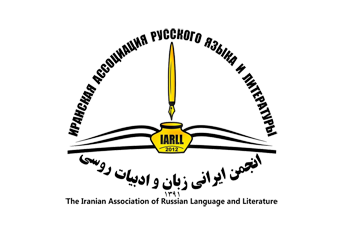COLOUR OF VIOLET IN THE RUSSIAN COLOUR CONCEPTOSPHERE
DOI:
https://doi.org/10.61186/iarll.23.9Keywords:
Linguistics of Colour, Conceptosphere, Colour Term, Phytonym, Linguistic ConsciousnessAbstract
The article presents the results of polydiscursive research (the material is lexicographic sources, associative experiment data, the Russian National Corpus materials), devoted to reconstruction of the segment of the floristic space of Russian colour conceptosphere (on the material of violets colour descriptions). The main results are: 1) the composition of main colour terms significant in plant visualisation (12 units) is revealed; the expansion of the colour spectrum is described; the colour terms spheres of denotation are established; 2) the functional potential of descriptions is revealed; 3) the composition of colour terms based on colour descriptions of violet (47) is established, the spheres of denotation are described; 4) the specificity of their functioning is revealed, which consists in the variability of interpretation of colour meaning, in the significance of correct mediated colour rendering, in the broad evaluability, in the actualization of cultural potential.
Extended abstract:
This article presents the results of a polydiscursive research aimed at reconstructing a segment of the floristic space of the Russian colour conceptosphere through the example of violet colour descriptions. The main objectives of the study are: 1) to identify the significant compound of colour descriptions in the plant’s colouristic representation; 2) to determine the functional potential of colour descriptions; 3) to establish the composition of colour terms based on violet's colouristic descriptions; and 4) to describe the specifics of their functioning. The research hypothesis is that colouristic descriptions of violets demonstrate high activity in producing new colour terms. The study employs methods such as the sampling method, descriptive-analytical method, contextual method, and quantitative data processing method. The novelty of the study lies in its polydiscursive nature, and the materials used include lexicographic sources (Russian explanatory dictionaries), associative experiment data (770 respondents), the Russian National Corpus materials (the Main corpus and the Poetry one), and texts of advertising communication (Avito). The analysis of different discourses texts allows for an actual representation of the plant’s visualisation specifics and reconstruction of a segment of the Russian colour conceptosphere. The main results of the study include: 1) the identification of the composition of main colour terms significant in plant visualisation (12 units); 2) the description of the expansion of the colour spectrum with lexemes such as 'to be in bloom', with the root -colour-, with the meaning of intensity, heterogeneity of colour, 'to lose colour', 'light', implicit colour, prototypical colour (violet); 3) the establishment of colour terms spheres of denotation; 4) the revelation of the compound of colour composites (17 units) and chains of colour (8 units), designed to accurately convey the colour impression; 5) the establishment of dominants of colour (lexemes with the meaning 'to be in colour'; purple); 6) the description of the combinability of colour denotations; 7) the revelation of the functional potential of colour descriptions (ontological, terminological, figurative and expressive, chronotopic – colour chronotope, prototypical); 8) the identification of the composition of colour terms based on colour descriptions of violet (47 units), and the description of their spheres of denotation; and 9) the revelation of the specifics of their functioning, which consists of variability of interpretation of colour meaning, significance of correct mediated colour rendering, broad evaluability, actualization of cultural potential. The inventory of colour terms and description of their functioning specifics are significant in creating a description of the Russian colour conceptosphere.
Downloads
Published
How to Cite
Issue
Section
License
Copyright (c) 2023 Issledovatel'skiy Zhurnal Russkogo Yazyka I Literatury

This work is licensed under a Creative Commons Attribution 4.0 International License.
![]()
"Creative Commons Attribution 4.0 International (CC-BY 4.0)"


